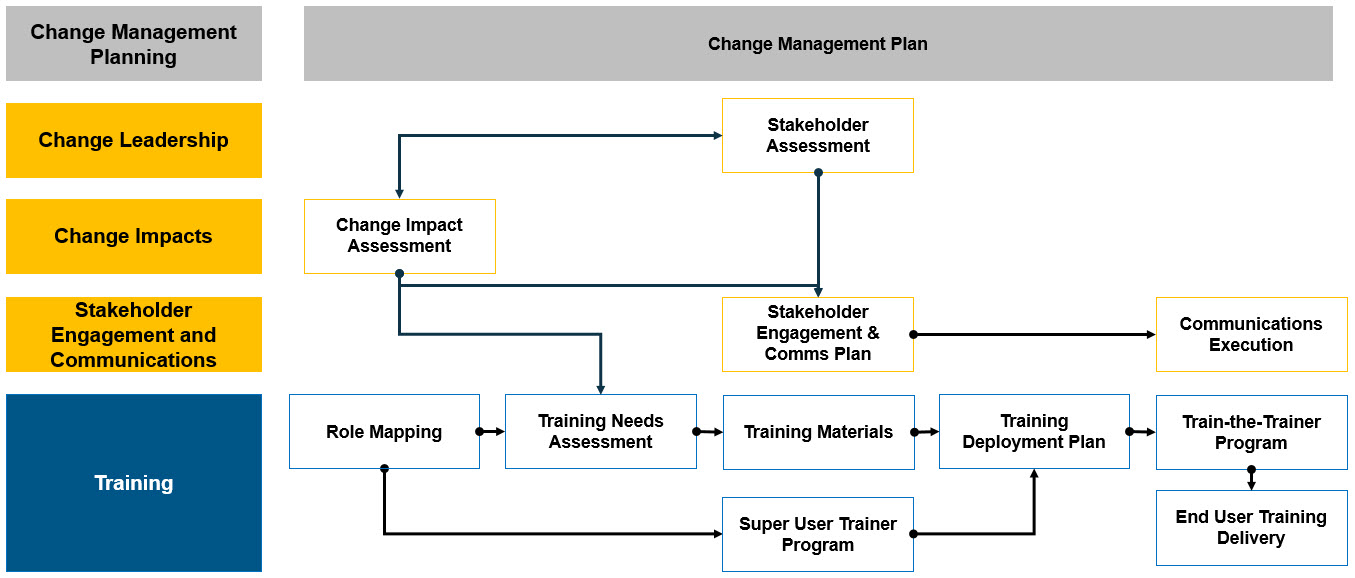This Website Is for Historical Reference Only
The Impact23 Program went live on July 1, 2023. This website remains available for historical purposes and is intended to inform those seeking background information about the financial system implementation program.
Content on this site is no longer being updated. For current information, resources, and support, please visit the Business & Financial Services website
Program Change Management Overview
Primer on Change Management
In today’s fast-paced business environment, being able to adapt to change is important. Within UC Riverside, there has been lots of change surrounding our requirements, processes and systems. As a result, to ensure that you continue to be successful in your daily operations and do not fall subject to change fatigue, an employee must learn how to deploy coping skills in the face of change.
This does not mean that the responsibility to learn how to deal with and manage the change is just on the employee, however. To ensure the success of a new initiative, UC Riverside also has the task of helping employees understand, commit to, accept, and embrace the overall change. This process of easing the University, or any organization at that, through these transitions, is called Change Management.
Throughout the early planning stages of the Impact23 Program, the program sponsors and team were cognizant of the significant changes that a program of this magnitude would bring. This led to the program incorporating the principles of Change Management through all stages of the program, from planning to Post-implementation Support[1] .
What is Change Management?
Change management is a comprehensive, cyclic and structured approach for transitioning individuals, groups, and organizations from a current state to a future state with intended business benefits.
Why is Change Management important?
Change management is a formal way of communicating with employees. It tells them why change is happening, what it will look like for them, and how it will ultimately benefit them in the end. It also serves as the framework that is used to support and understand the change and its effect on the University and its employees.
Change Management provides the following benefits:
- Effective change management supports a smooth transition from the old to the new, while maintaining morale and productivity
- It provides management and staff the support to raise concerns regarding the change
- It helps to plan efficient communication strategies
- It helps to minimize resistance to change
- It improves employee morale and productivity and fosters cooperation, collaboration, and communication
- It helps to minimize stress, anxiety, and change fatigue
Change Management Approach
The goal of the Impact23 Program change management is for all impacted stakeholders to have a clear understanding of the project and, where appropriate, be equipped and ready to operate in the new system. Change activities have been selected recognizing that change takes time and requires an integrated approach with multiple touchpoints to ensure successful adoption of the changes that Impact23 brings to campus.
Our approach is made up of a mixture of awareness and training activities. These activities are based on a comprehensive analysis of our stakeholders and the change impacts that will affect them in the future. Based on this data, we devise a communication and engagement plan and training needs assessment. The training needs assessment helps us define and prioritize training to develop and deliver before and after the new system goes live.

Impact23 Program change management activities align with the best practices of the Prosci ADKAR Model. The stages, listed below, are designed to help the campus community understand and accept the changes coming with Impact23.
- Awareness of the business reasons for change; awareness is the goal/outcome of early communications related to an organizational change
- Desire to engage and participate in the change; desire is the goal/outcome of sponsorship and resistance management
- Knowledge about how to change; knowledge is the goal/outcome of training and coaching
- Ability to realize or implement the change at the required performance level; ability is the goal/outcome of additional coaching, practice, and time
- Reinforcement to ensure change sticks; reinforcement is the goal/outcome of adoption measurement, corrective action, and recognition of successful change
Change Management Resources
Executing a transformation is hard work, and is a combination of art and science. Effective change programs include:
- A clearly defined vision that will resonate with the audience
- Visible advocacy from leaders who can drive the change through
- Effective engagement based upon timely and targeted communications
- Delivery of training and supporting mechanisms to instruct, reinforce, and drive desired changes
Here are links to instructional videos in Change Management from our Deloitte partnership so you can familiarize yourself with its concepts, terminology , and approach.
- Implementation Challenges: Change Management (3m 35s)
- What is Change Management? (2m 35s)
Change and Resistance Seminar
Watch the Impact23 Change and Resistance Seminar featuring Lisa Page. A 1-hour foundational change management session to better understand how to successfully scale and sustain change for an ERP implementation.
- Understanding why people resist change
- Understanding stages of change resistance transition
- Coping with ERP changes
- Identifying Ways to champion change within the university culture
[1] Post-implementation Support is defined as the period post-Go Live (Concur target date of June 2022 and Kuali/Oracle target date of July 2023). This period is dedicated to addressing issues that may arise.
